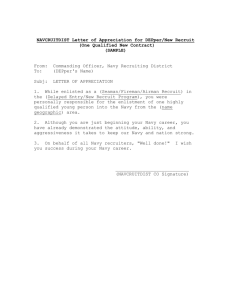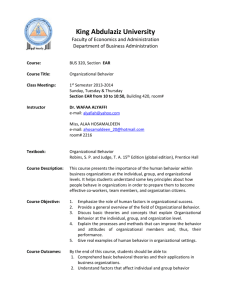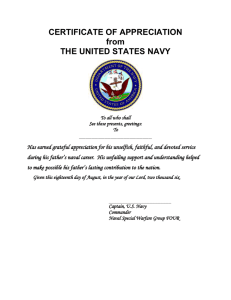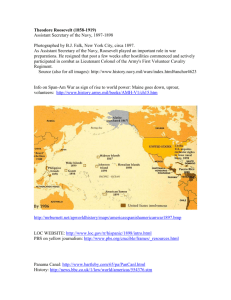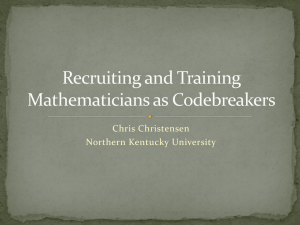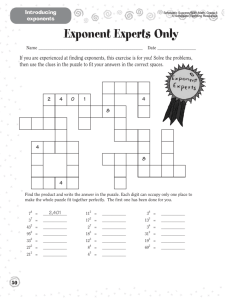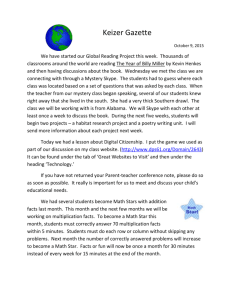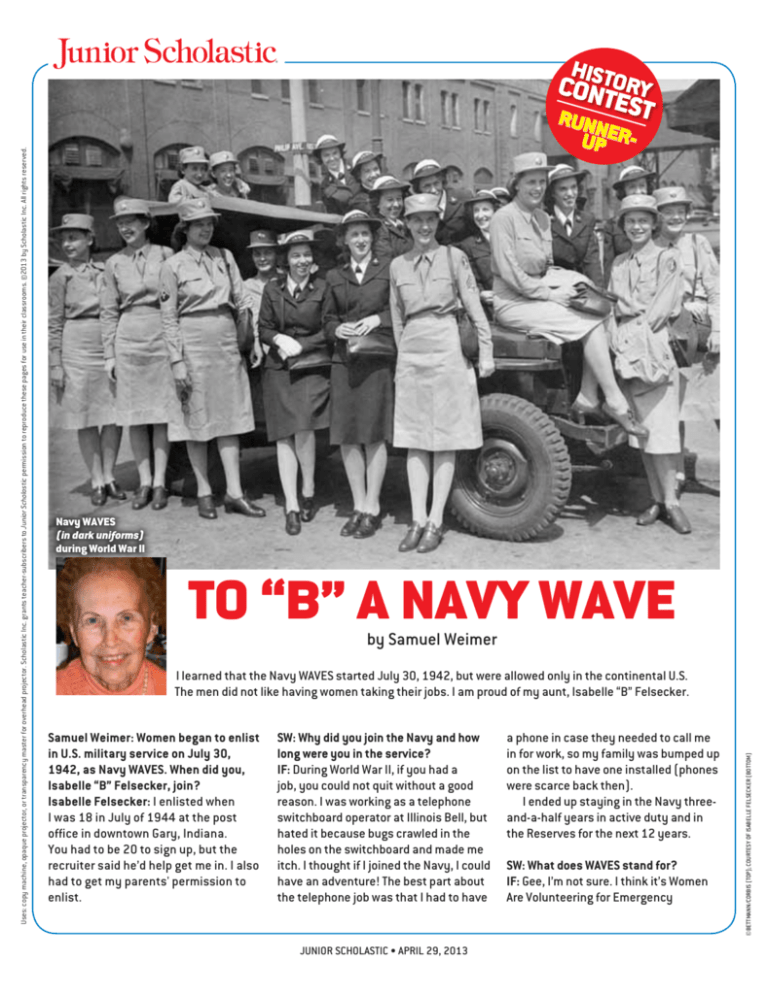
H
istor
COnte
y
Runnerst
Up
-
Navy WAVES
(in dark uniforms)
during World War II
To “B” a Navy WAVE
by Samuel Weimer
I learned that the Navy WAVES started July 30, 1942, but were allowed only in the continental U.S.
The men did not like having women taking their jobs. I am proud of my aunt, Isabelle “B” Felsecker.
Samuel Weimer: Women began to enlist
in U.S. military service on July 30,
1942, as Navy WAVES. When did you,
Isabelle “B” Felsecker, join?
Isabelle Felsecker: I enlisted when
I was 18 in July of 1944 at the post
office in downtown Gary, Indiana.
You had to be 20 to sign up, but the
recruiter said he’d help get me in. I also
had to get my parents' permission to
enlist.
SW: Why did you join the Navy and how
long were you in the service?
IF: During World War II, if you had a
job, you could not quit without a good
reason. I was working as a telephone
switchboard operator at Illinois Bell, but
hated it because bugs crawled in the
holes on the switchboard and made me
itch. I thought if I joined the Navy, I could
have an adventure! The best part about
the telephone job was that I had to have
Junior Scholastic • April 29, 2013
a phone in case they needed to call me
in for work, so my family was bumped up
on the list to have one installed (phones
were scarce back then).
I ended up staying in the Navy threeand-a-half years in active duty and in
the Reserves for the next 12 years.
SW: What does WAVES stand for?
IF: Gee, I’m not sure. I think it’s Women
Are Volunteering for Emergency
©Bettmann/Corbis (Top); Courtesy of Isabelle Felsecker (Bottom)
Uses: copy machine, opaque projector, or transparency master for overhead projector. Scholastic Inc. grants teacher-subscribers to Junior Scholastic permission to reproduce these pages for use in their classrooms. ©2013 by Scholastic Inc. All rights reserved.
®
®
IF: One of the best things about my
service was the fun we all had. We all
went in groups to dances every Friday
and Saturday night. The men were
always more plentiful, so I always had
dance partners. I never would have
traveled the country if I hadn’t joined
the Navy.
Services. (Women Accepted for
Volunteer Emergency Services is the
correct answer.)
SW: What base did you go to for basic
training?
IF: We had basic training at Hunter
College in Bronx, New York, for six
weeks and we marched, marched,
marched! My first meal as a WAVE?
Navy beans!
Hulton Archive/Getty Images
SW: What were you issued for your
uniform?
IF: We were given $300 to cover uniform
costs and alterations. I remember dress
blues, a seersucker or summer uniform,
and a navy-blue outfit. I had a hat to
wear, a tie, and big, clunky shoes that I
hated! No slacks back then, just skirts
and a dress coat, two or three white
blouses.
Since I didn’t need any alterations, I
got to use some of the extra money for
calls home. Not all girls could do that,
since not everyone had phones in their
homes. But remember, I had worked for
the phone company so we did. I cried
every phone call home for the first few
months.
SW: The WAVES were stationed only in
the continental U.S. Where were you
stationed?
IF: After New York, I went to Cedar Falls,
Iowa, for two months of secretarial
classes. From there, they sent me to
Norman, Oklahoma, where the dust from
the red clay covered you in minutes and
got your uniforms all dusty! I worked in
the educational office for the Aviation
Machinists Mates School—the men who
repaired the airplanes for overseas. I
typed their repair manuals. They didn’t
like us women—they resented us taking
their jobs, even though they weren’t
needed here in the States as much as
they were overseas. After Oklahoma, I
went to Memphis, Tennessee.
SW: What was your starting pay and
ending pay?
A Navy WAVE
recruiting poster
“I felt very proud and
considered it a great
honor that I could be
part of all these
women who joined
the Navy during
World War II.”
IF: Ninety dollars a month pay! That also
included room and board and all meals.
I don’t remember what I was making at
the end of my service.
SW: What was your rating, and what was
your rank?
IF: Yeoman second class. [Yeomen
perform administrative duties.]
SW: How fast could you type?
IF: I was quite proficient, but I don’t
remember how fast I could type. I typed
well enough that I did side work for
many of the officers who were writing
books about their war experiences.
SW: Do you have any interesting
stories from your time in the service?
Junior Scholastic • April 29, 2013
SW: Did you get to meet any famous
people?
IF: One of the sailors on the base in
Oklahoma helped draw cartoons in the
airplane manuals. They were always
funny and well drawn. His name was
George Dial—he went on to work with
Walt Disney after the war. The Glenn
Miller Orchestra played at our base in
Oklahoma. It was right after Mr. Miller
had been killed flying to a performance.
Tex Beneke took over as bandleader
then. There were always lots of
entertainers at the bases, but they
didn’t seem so famous to us.
SW: Did you ever use the skills you
learned in the Navy after you got out?
IF: After the war, I got a great job at the
Gary Steel Mills with my typing skills. I
did that until I got married and started
a family. I volunteered in the library at
my children’s school for years because I
could type.
SW: Where were you when the war
ended?
IF: When World War II ended, I was
still stationed in Oklahoma. I don’t
remember any special celebrations
because every weekend the United
Service Organization held dances for
people in the military anyway. It was
early summertime, so we were more
frightened about tornadoes than we
were happy about the war ending!
SW: Would you join the Navy WAVES
again?
IF: I felt very proud and considered it
a great honor that I could be part of
all these women who joined the Navy
during World War II.
®
unner
Up -
by Evangeline Robertshaw
J
essica Porco (left) was born on December 24, a real Christmas miracle, for she is
a miracle worker. She is kind, understanding, and trusted. She is a family friend
who worked with my father for years. She was a stockbroker for Morgan Stanley in
Pittsburgh, Pennsylvania. She was supposed to work in New York City for four weeks.
However, her plans changed on September 11, 2001, also known as 9/11.
Evangeline Robertshaw: Why were you
in New York?
Jessica Porco: I was in New York for
my job. I was a stockbroker for Morgan
Stanley. I had just gotten into New York
the Sunday before.
Plumes of smoke pour from the
World Trade Center buildings in
New York on Sept. 11, 2001.
Planes crashed into both World
Trade Center towers minutes
apart in a horrific scene of
explosions that led to the
collapse of the buildings.
ER: Where were you in the towers?
JP: I was in the South Tower on the 63rd
floor.
ER: What happened when a plane hit the
North Tower?
JP: I was on my break, so my friend and
I went to get coffee right outside the
building. Then the first plane hit, and
everyone on the ground thought it was
a plane exploding in midair. It sounded
like a huge boom that I didn’t recognize
at all. Lots of debris fell. One piece hit
my head, and I started to bleed. We
didn’t see the plane hit because it was
on the other side of the North Tower.
No one thought that the situation was
very serious, so we went back into the
building.
"My friend and I were
lucky enough that we
got onto a ferryboat. I
ended up running three
miles in stiletto heels."
ER: When did you realize that the plane
had hit the North Tower?
JP: Everyone was locked in the lobby
and some people decided to go back to
work, so we all went up to a floor where
we switched elevators. When we got
off the elevator, there was a firefighter
helping a lady go down the stairs beside
us and her hair was on fire. That’s when
we realized that a plane had hit the
North Tower. All of us got really scared.
So we all jammed into the elevators
to get to the lobby. When we got down
Courtesy of Jessica Porco (Top); PATRICK SISON/AP Photo (Bottom)
Uses: copy machine, opaque projector, or transparency master for overhead projector. Scholastic Inc. grants teacher-subscribers to Junior Scholastic permission to reproduce these pages for use in their classrooms. ©2013 by Scholastic Inc. All rights reserved.
Trusted
His
COnttoersy
t
R
Junior Scholastic • April 29, 2013
®
there, more than half of the people
headed downstairs to the subways
and the rest headed out the revolving
doors. Four people filled each pit in the
doors, which were [usually] filled with
one or two. One man, who was thick and
bulky, tripped and fell through the door,
breaking the glass. The glass fell on me
and it cut my arm and hand. So my head
and my entire arm were bleeding.
People run from the
collapse of a World
Trade Center tower.
SUZANNE PLUNKETT/AP Photo
ER: What happened when a second
plane then hit the South Tower?
A: My friend and I were running to
Battery Park. There was paper flying
everywhere. When the plane hit, it went
over my head. It made a huge boom.
ER: What was going on when you got to
Battery Park?
JP: There was about 15 minutes of
[total] darkness. Complete strangers
trusted other people, huddling together.
People didn’t know if they were alive or
dead. Most of the people closed their
eyes, but I opened mine. People’s eyes
were bleeding because of all the little
particles in their eyes. It was freaky to
see people with their eyes bleeding.
There was barely any noise so there
was no screaming; it was silent. Some
people were throwing up because they
got queasy and sick to their stomachs.
People started jumping into the water,
and the police officers got upset
because the water level was very low
and it was hard to fish people out. I met
a model for Tommy Hilfiger who said
that my friend and I could stay with her
and her roommate in Hoboken, New
Jersey. There were also ferryboats to
take people over to Jersey City. Only
women and children were allowed on
these boats, but the men pushed the
women out of the way. They didn’t care
at that point. My friend and I were lucky
enough that we got onto a ferryboat.
I ended up running three miles in
stiletto heels.
ER: Did you go to therapy afterward?
A: I was supposed to go to a therapist.
Everyone who experienced it was. But I
didn’t go. I thought I was fine.
ER: What did you do when you got to
New Jersey?
ER: How has this event changed your
life?
JP: Only restaurants and liquor stores
were open. . . I had 800 dollars in cash
on me. In the restaurants, it didn’t
matter if you had money to pay. If you
had money, you paid, and if you didn’t,
it was OK. It didn’t matter. Later, we
met an FBI agent who drove the model,
my friend, and me to Hoboken. He told
us that it had been a terrorist attack
and that the terrorists had purposely
crashed into the towers.
ER: What did people do about sleeping
that night?
JP: Some people slept on the streets.
Some people with million-dollar suits
slept on the streets. I was lucky
enough to stay with the model and her
roommate in Hoboken. I got to take a
shower and sleep comfortably.
Junior Scholastic • April 29, 2013
JP: I quit my job. I moved back in with
my mother. I got offered a job in New
York, but I turned it down. A couple of
months afterward, I had a bad case of
pneumonia, and I was in the hospital
for two weeks. I had pneumonia from
all the soot and debris in my lungs. I
sound very nasally because I don’t have
any more sense of smell. I slowly lost
it a couple months after. I also have
memory loss from that day.
What I learned from my interview with
Jessica Porco:
I thought that it was fascinating that
random strangers in New York City
huddled together and trusted one
another. It shows that not all people
are bad. People were drawn together
to support each other, giving me a
better perspective on humankind.
Talking to her reminded me of a quote
from Mahatma Gandhi (1869-1948):
“You must not lose faith in humanity.
Humanity is like an ocean; if a few drops
of the ocean are dirty, the ocean does
not become dirty.”

